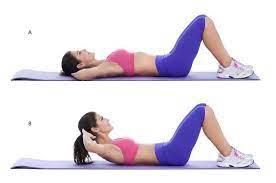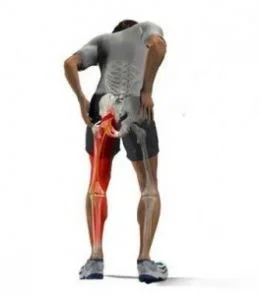Preventing Pain Before It Starts: How Office Ergonomics Supports Long-Term Physiotherapy Success
In a world where we spend over a third of our lives at work—often seated in front of screens for hours on end—the rise in posture-related injuries is no surprise. Physiotherapists across Australia are increasingly treating office workers suffering from neck pain, lower back issues, carpal tunnel syndrome, and repetitive strain injuries. Yet, for all the effective manual therapy and exercise prescriptions offered in the clinic, one question continues to challenge long-term recovery:
What happens when the patient returns to the same poorly set-up workstation that caused their problem in the first place?
This is where the intersection of office ergonomics and physiotherapy becomes critical. Workplace posture is no longer a luxury issue—it’s a frontline factor in both injury prevention and rehabilitation. For physiotherapists, integrating ergonomic awareness into treatment plans not only supports better outcomes, it reduces recurrence and enhances patient independence.
Table of Contents
The Problem: Workstations Are Undermining Physiotherapy
Let’s consider two typical patient scenarios seen in physiotherapy clinics today:
- A 34-year-old software engineer presents with chronic neck and upper back tightness. The culprit? A laptop screen is too low, no external keyboard, and sitting on a dining chair for 8 hours a day while working from home.
- A 45-year-old marketing manager is undergoing rehabilitation for lumbar disc bulging. She’s improving with therapy, but her fixed office chair offers no lumbar support, her hips sit below her knees, and she rarely changes posture.
In both cases, physiotherapy is fighting an uphill battle if their daily work environment is working against them. Recovery plateaus, symptoms flare between sessions, and long-term outcomes suffer.
Why Ergonomics Is Physiotherapy’s Best Friend
Ergonomics is the science of designing the workplace to fit the user, not the other way around. When it comes to physical therapy, proper ergonomics:
- Reduces biomechanical load on vulnerable tissues
- Promotes optimal joint alignment and spinal posture
- Minimises cumulative trauma and compensatory movement patterns
- Encourages task variation to offset muscular fatigue
- Improves mental clarity and movement awareness
In short, a properly adjusted workstation acts like an extension of the therapy table, supporting the neuromuscular adaptations you’re building in the clinic.
The Chair Is the First Line of Defence
Of all the workstation components, the chair is arguably the most important. The wrong chair can lead to years of discomfort; the right one can transform posture, comfort, and performance.
High-quality ergonomic task chairs are designed with physiotherapy principles in mind. Key features to look for include:
- Adjustable lumbar support to maintain the spine’s natural curve
- Seat height control to ensure knees are level with hips and feet flat on the floor
- Tilt mechanisms to allow dynamic sitting and reduce static load
- Adjustable armrests that support shoulders without elevating them
By recommending or facilitating the transition to an ergonomic chair, physios can drastically reduce spinal compression and encourage patients to maintain neutral alignment during work hours.
Why Screen Height Matters More Than You Think
The human head weighs around 5 kg. For every inch it leans forward past neutral, the strain on the cervical spine increases exponentially. It’s no wonder that forward head posture is one of the most common dysfunctions seen in desk-bound patients.
This is where monitor arms for posture alignment become essential. Adjustable monitor arms allow users to:
- Raise the screen to eye level
- Avoid tilting the neck down for prolonged periods
- Maintain visual focus without craning forward
- Customise viewing angles for dual-monitor setups
Physiotherapists can educate patients on how improper screen placement disrupts scapular mechanics, increases cervical extensor fatigue, and leads to headaches and shoulder pain. A monitor arm is a small ergonomic addition that delivers outsized clinical benefits.
The Link Between Task Variation and Recovery
No matter how well-designed a chair or desk is, movement is still medicine. Static postures—however “ergonomic”—still contribute to muscle fatigue, joint stiffness, and reduced blood flow. For physiotherapists, this principle is well known.
Encouraging patients to:
- Stand every 30–60 minutes
- Alternate between sitting and standing if possible
- Perform micro-stretches at their desk
- Use sit-stand desks for postural diversity
…is just as important as prescribing exercises for home rehab. Ergonomic equipment can facilitate this task variation, supporting therapy by integrating movement into the workflow.
Evidence-Based Physiotherapy Meets Practical Ergonomics
Workplace injury prevention is no longer just the domain of OH&S officers. Physiotherapists play an increasingly central role in equipping patients with the tools and knowledge to modify their environment.
| Physiotherapy Goal | Ergonomic Support Tool |
| Maintain lumbar spine integrity | Adjustable lumbar support in task chairs |
| Reduce neck flexion strain | Monitor arms to elevate screen height |
| Minimise shoulder tension | Adjustable armrests and neutral keyboard reach |
| Reduce spinal load when seated | Seat pan depth, tilt function, footrests |
| Encourage movement variability | Sit-stand desks, break reminders |
Physiotherapists as Ergonomic Advocates
A modern physio consult may include:
- Posture assessments using real workstation photos
- Advice on seating and desk positioning
- Integration of workplace modifications into treatment plans
- Letters of support for workplace ergonomic assessments or equipment funding
By weaving ergonomics into patient education, physiotherapists demonstrate holistic care that empowers individuals to take ownership of their recovery.
When to Refer or Collaborate
While physiotherapists are skilled in anatomy and movement, they don’t need to be furniture experts. Collaborating with ergonomic specialists or recommending trusted sources for furniture allows the physio to focus on clinical goals while ensuring patients receive tailored product guidance.
Some companies even offer trial periods, ergonomic consultations, and support for fitting equipment properly in the home or office.
Final Thoughts: Empowering Recovery Beyond the Clinic
Office-based injuries and postural dysfunctions are not going away—in fact, hybrid work models mean they’re likely to become more common. For physiotherapists, this presents both a challenge and an opportunity.
Ergonomics is no longer a separate field—it’s a vital component of successful rehabilitation. By aligning therapy with smart workstation design, physiotherapists can reduce reinjury rates, extend the impact of treatment, and promote lasting well-being.
Need a head start? Explore top-rated ergonomic task chairs and monitor arms for posture alignment that support musculoskeletal health at work—because recovery starts at the desk, not just the clinic.






